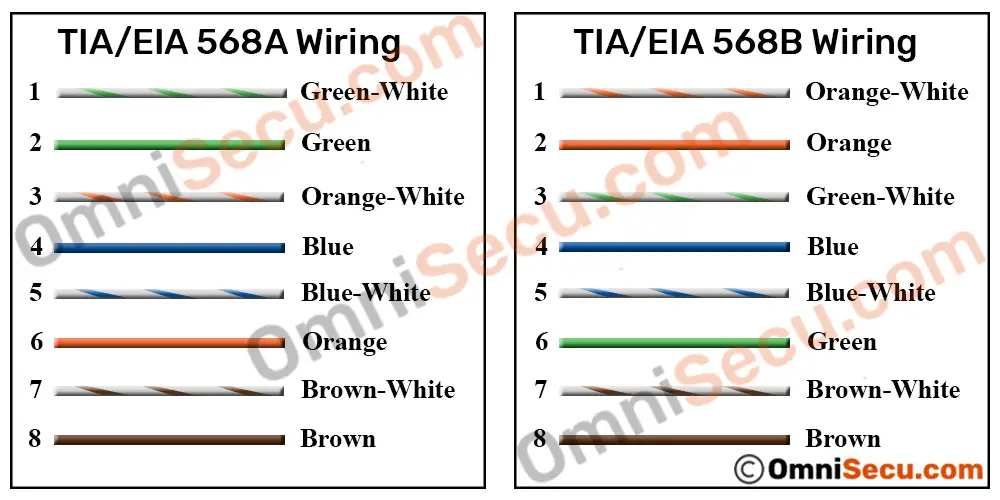TIA/EIA 568A and TIA/EIA-568B standards
There are two major Unshielded Twisted Pair Cable wiring standards used widely in networking industry. Telecommunications Industry Association (TIA)/Electronic Industries Alliance (EIA) developed the TIA/EIA 568A & TIA/EIA 568B standards for Unshielded Twisted Pair wiring.
TIA/EIA 568A and TIA/EIA-568B standards determine the order of the wires placed in the RJ45 connector.
Functionally, there is no difference between TIA/EIA 568A and TIA/EIA-568B standards. Only the difference is that the position of Green and Orange wires are switched.

You can follow any standard. If a specific standard is mentioned in the network installation project documents, follow that.
If you terminate the RJ45 jacks at both ends of a patch cable with same standard (either TIA/EIA 568A on both sides or TIA/EIA 568B on both sides), you will get a Straight-through cable. If you terminate RJ45 jacks at both ends with different TIA/EIA 568 standards (one side TIA/EIA 568A and other side TIA/EIA 568B) you will get a Crossover cable.